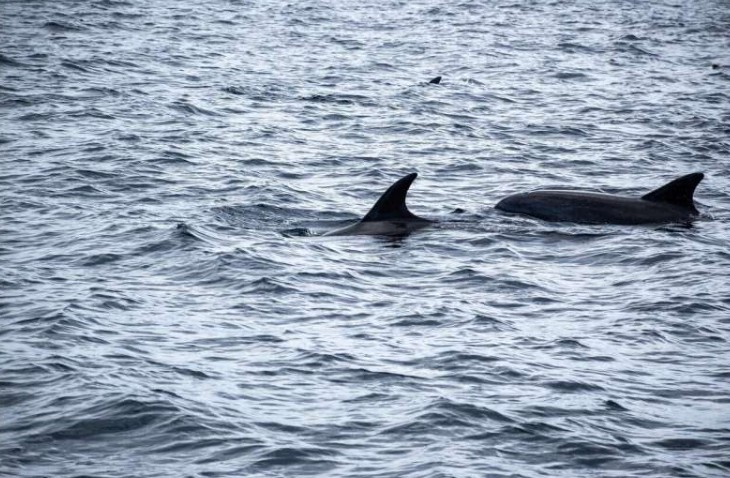 |
|
(Hugh R Hastings/Getty Images)
|
Full Story: PhysOrg (4/16)
UK dolphin deaths correlate with elevated sea temperature and chemical contaminants

Rising ocean temperatures and lingering industrial toxins are proving deadly for short-beaked common dolphins in UK waters. Researchers led by the Zoological Society of London have drawn a clear connection between environmental stress and the spread of infectious disease in this sentinel marine species. Results point to two powerful drivers of mortality acting in tandem: warming seas and chemical pollutants that have persisted for decades.
Climate change and chemical pollution have been separately linked to rising rates of infectious disease that threaten biodiversity in marine ecosystems. Waters near industrialized coasts are key areas where persistent chemicals ultimately accumulate, including polychlorinated biphenyls (PCBs).
PCBs are toxic, accumulating in the fatty tissues of marine mammals and impairing immune function and reproduction. Banned in Europe in the mid-1980s, PCBs continue to enter marine systems through runoff, inadequate disposal, dredging, and atmospheric fallout.
Increasing sea surface temperatures are altering species distributions, disrupting food webs, and changing how pathogens move through marine systems. Warmer waters have been associated with higher disease rates across multiple marine species.
Short-beaked common dolphins, already burdened by high PCB levels, are also experiencing shifts in prey availability and habitat use driven by ocean warming.
In the study, “Sea temperature and pollution are associated with infectious disease mortality in short-beaked common dolphins,” published in Communications Biology, researchers conducted an epidemiological study of dolphins stranded in the United Kingdom between 1990 and 2020.
Necropsy data from 836 short-beaked common dolphins were analyzed. A subset of 153 dolphins were used for toxicological analysis of blubber to assess PCB concentrations.
Researchers applied logistic regression modeling to test the relationship between infectious disease mortality and two environmental variables: sea surface temperature and PCB burden.
Monthly mean sea surface temperature at the time of each stranding served as the climate indicator. Additional variables such as latitude, longitude, age, sex, and body condition were included to account for individual and spatial variation.
Results showed a statistically significant association between both sea surface temperature and PCB concentration with infectious disease mortality. For each 1 mg/kg lipid increase in PCB blubber concentration, risk of infectious disease mortality increased by 1.6%. Each 1°C rise in sea surface temperature corresponded to a 14% increase in mortality risk.
A novel PCB threshold of 22 mg/kg lipid was identified as the point at which disease risk became significantly elevated.
Modeled PCB concentrations declined slightly between 1990 and 2020, but levels in adult males remained above the derived threshold. Concentrations declined in adult females and juveniles but not significantly in males. Sea surface temperatures increased significantly in northern UK waters over the same time period.
No statistically significant trends were found in other mortality categories. Infectious disease mortality increased across all regions represented in the dataset.
Continued warming and the persistence of legacy pollutants suggest that health risks to marine species may rise without coordinated international action. The identification of a species-specific toxicity threshold offers a practical benchmark for evaluating future mitigation efforts.
No evidence was found for a significant interaction between PCB levels and sea temperature, yet both independently correlated with disease mortality. Observed trends suggest future risks will intensify without stronger efforts to reduce environmental contamination and limit warming.
The authors propose that similar risks may exist in other marine megafauna and commercially important species. These findings point to an urgent need for conservation strategies that address climate change and chemical pollution simultaneously.




